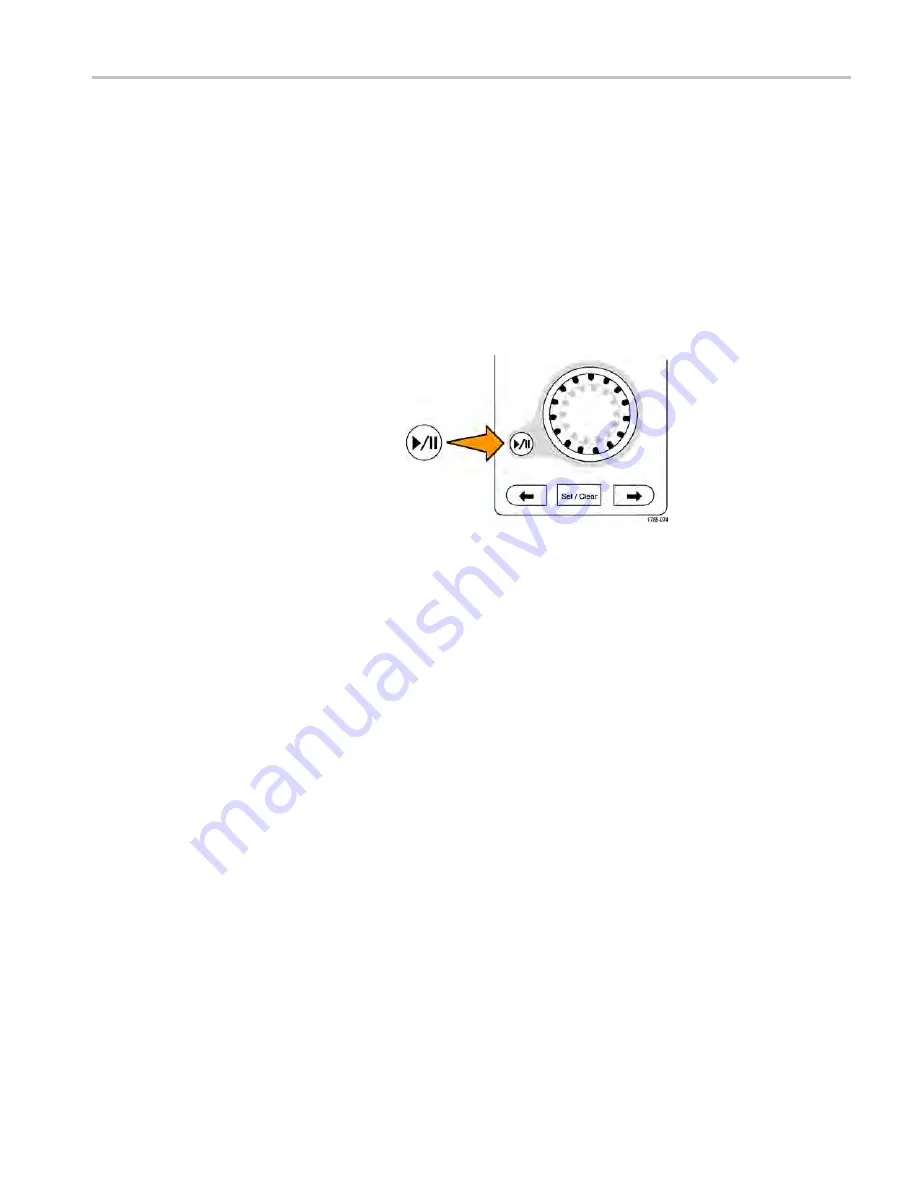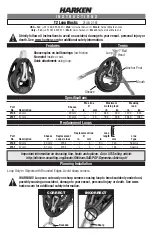
Display a waveform
3.
Change the play direction by reversing
the direction that you are turning the
pan knob.
4.
During play, up to a point, the more
you turn the outer knob, the faster the
waveform accelerates. If you rotate the
outer knob as far as it can go, the play
speed does not change, but the zoom
box quickly moves in that direction.
Use this maximum rotation feature to
replay a part of the waveform that you
just saw and want to see again.
5.
Pause the play-pause feature by
pushing the play-pause button again.
Searching and marking waveforms
You can mark locations of interest in the acquired waveform. These marks help you limit your analysis to particular regions of
the waveform. You can mark areas of the waveform automatically, if they meet some special criteria, or you can manually
mark each item of interest. You can jump from mark to mark (area of interest to area of interest). You can automatically
search and mark many of the same parameters that you can trigger on. Many search parameters do not have the time limits
as triggers. You can search on math and reference waveforms. You can
fi
nd all of the acquired events of a certain type.
Search marks provide a way to mark a waveform region for reference. Set marks automatically with search criteria. Search
for and mark regions with particular edges, pulse widths, runts, logic states, rise/fall times, setup and hold violations, and
bus search types.
Search and Mark do not support digital waveforms.
MSO/DPO70000DX, MSO/DPO70000C, DPO7000C, and MSO/DPO5000B Series User Manual
107
















































